The Top 15 Things to Do in Gran Canaria
Gran Canaria is a diverse island that offers an array of activities, from serene beaches to rugged mountains and vibrant cultural sites. Whether you're seeking adventure, relaxation, or a deep dive into the island's rich history, this guide covers the top 15 experiences that will make your visit unforgettable.
But First, Find Your Ideal Stay in Gran Canaria
Before exploring the diverse landscapes and cultural gems of Gran Canaria, be sure to book the perfect accommodation through Have You Got. Whether you're planning beach days or mountain hikes, these properties will place you close to the island's top attractions, ensuring you enjoy both comfort and convenience.
1. Explore the Maspalomas Dunes
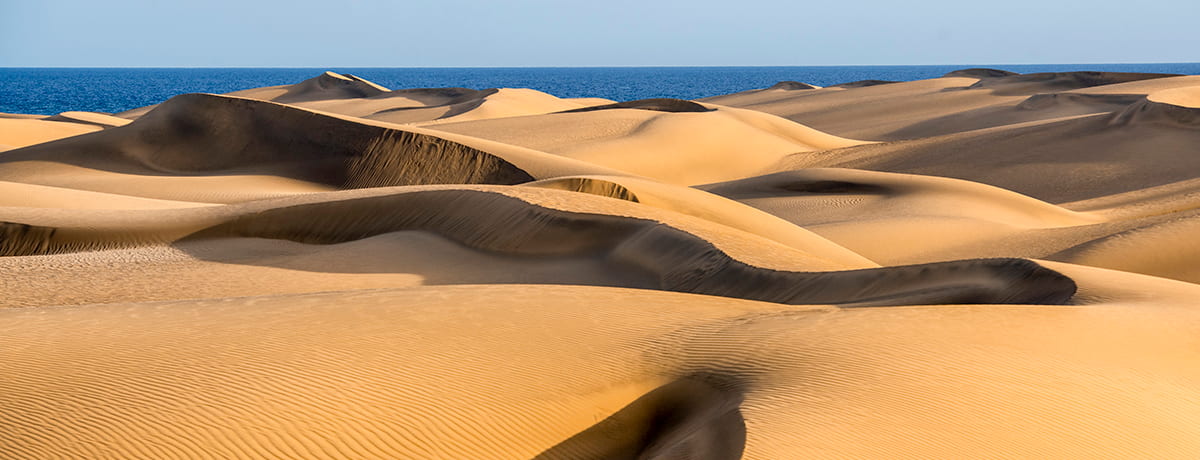
The Maspalomas Dunes are an extraordinary natural landscape that stretches across the southern coast of Gran Canaria. This vast expanse of golden sand dunes, sculpted by the wind, offers visitors an almost otherworldly experience reminiscent of a desert. As you trek through the dunes, the soft sand shifts beneath your feet, creating an ever-changing landscape. The contrast between the bright sands and the deep blue Atlantic Ocean in the distance is a sight to behold. Historically, the dunes have been a critical part of Gran Canaria's ecosystem, supporting a unique array of flora and fauna that have adapted to the harsh conditions. The area has been protected as a natural reserve, ensuring that its beauty and ecological importance are preserved for future generations.
Location: Maspalomas, Gran Canaria, Spain
Opening Hours: Open 24 hours
Ticket Cost: Free
Review: "Walking through the Maspalomas Dunes feels like stepping into a different world. The views are simply stunning." - Lisa V., TripAdvisor
2. Visit the Historic Vegueta District

Vegueta, the historic heart of Las Palmas, is a living museum that takes you back to the 15th century when the Spanish first settled in the Canary Islands. The district is a labyrinth of narrow cobblestone streets, lined with beautifully preserved colonial buildings that now house museums, art galleries, and charming cafes. Notable sites include the Casa de Colón, where Christopher Columbus is said to have stayed during his journey to the New World. The district's architecture, with its wooden balconies and intricately carved facades, reflects the wealth and importance of Las Palmas during the early colonial period. Vegueta is also home to the impressive Catedral de Santa Ana, a striking example of Gothic and Renaissance architecture that dominates the skyline.
Location: Vegueta, Las Palmas, Gran Canaria, Spain
Opening Hours: Most attractions open from 10:00 AM to 6:00 PM
Ticket Cost: Varies by attraction
Review: "Vegueta's charm lies in its rich history and beautiful architecture. A must-visit for history lovers." - John D., Capture the Atlas
3. Relax at Playa de Las Canteras

Playa de Las Canteras is more than just a beach; it’s a thriving ecosystem and a centre of local culture in Las Palmas. Stretching for over three kilometers, this urban beach is protected by a natural reef, making its waters calm and ideal for swimming and snorkeling. The promenade along the beach is bustling with life, filled with restaurants, cafes, and shops that cater to both locals and tourists. Historically, Las Canteras has been the lifeblood of the city, providing a place for commerce, socializing, and recreation for centuries. The beach is also a popular spot for surfers, thanks to its consistent waves on the southern end.
Location: Las Palmas, Gran Canaria, Spain
Opening Hours: Open 24 hours
Ticket Cost: Free
Review: "A perfect blend of city life and beach relaxation. The promenade is full of life." - Julian N., TripAdvisor
4. Explore Palmitos Park
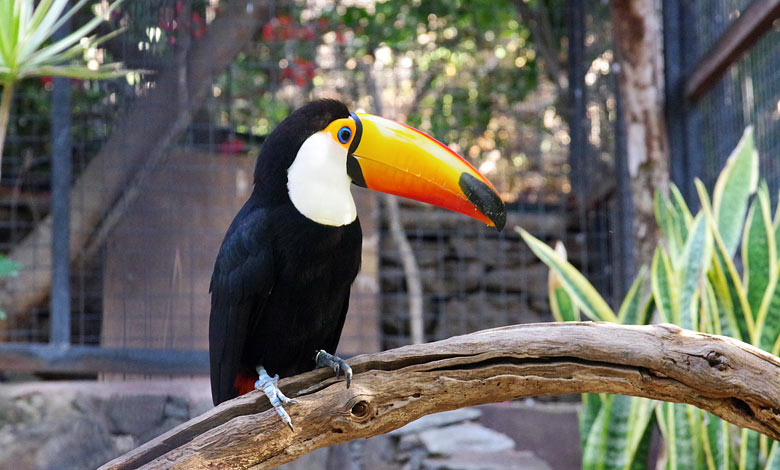
Palmitos Park is an oasis of biodiversity, nestled in a lush valley in the south of Gran Canaria. The park is home to a wide variety of flora and fauna, including an impressive collection of cacti and palm trees, which thrive in the subtropical climate. It also boasts a zoo that houses a diverse range of animals, from exotic birds and butterflies to meerkats and orangutans. One of the park's main attractions is the dolphin show, where visitors can witness these intelligent creatures perform a series of acrobatic feats. Opened in 1978, Palmitos Park has become a beloved destination for families, combining entertainment with education through its various exhibits and shows.
Location: Barranco de Los Palmitos, Maspalomas, Gran Canaria, Spain
Opening Hours: 10:00 AM - 6:00 PM
Ticket Cost: €30 for adults, €22 for children
Review: "The shows at Palmitos Park are entertaining and educational. A great day out for families." - Stephanie C., TripAdvisor
Website: www.palmitospark.es
5. Hike to Roque Nublo

Roque Nublo is not just a natural wonder but a symbol of Gran Canaria itself. This towering monolith, formed by volcanic activity millions of years ago, stands 80 meters tall and offers one of the most spectacular hiking experiences on the island. The hike to Roque Nublo is moderately challenging, winding through pine forests and rugged terrain, but the panoramic views from the top make it well worth the effort. On a clear day, you can see as far as Tenerife, with Mount Teide rising majestically in the distance. The rock has been a sacred site for the indigenous Guanche people, who believed it was a place of spiritual significance. Today, it remains a powerful symbol of the island's natural beauty and cultural heritage.
Location: Tejeda, Gran Canaria, Spain
Opening Hours: Open 24 hours
Ticket Cost: Free
Review: "The hike is challenging but rewarding. The views from the top are breathtaking." - Mark H., Hand Luggage Only
6. Discover the Caves of Guayadeque
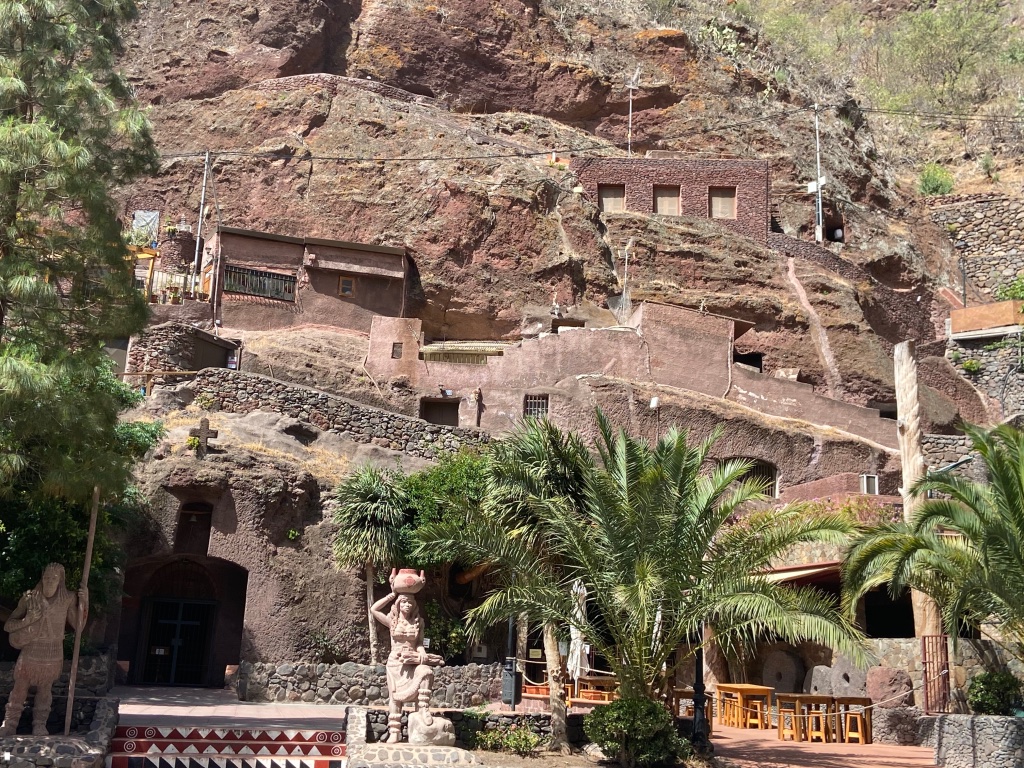
The Caves of Guayadeque offer a fascinating glimpse into the ancient history of Gran Canaria. Located in a verdant ravine between the towns of Ingenio and Agüimes, these caves were once home to the indigenous Canarian people. Today, many of the caves have been converted into homes, restaurants, and even a small museum. The museum provides insights into the lives of the island's early inhabitants, showcasing artifacts and reconstructions of their living conditions. The ravine itself is a natural wonder, lush with vegetation and crisscrossed by walking paths that offer stunning views of the surrounding landscape. The caves are a testament to the resilience and ingenuity of the island's original settlers, who carved their homes out of the rock to escape the harsh sun and winds.
Location: Ingenio, Gran Canaria, Spain
Opening Hours: 10:00 AM - 6:00 PM
Ticket Cost: €5
Review: "A fascinating glimpse into the island’s past. The museum is well worth a visit." - Ana L., Capture the Atlas
7. Enjoy Water Sports at Playa de Amadores
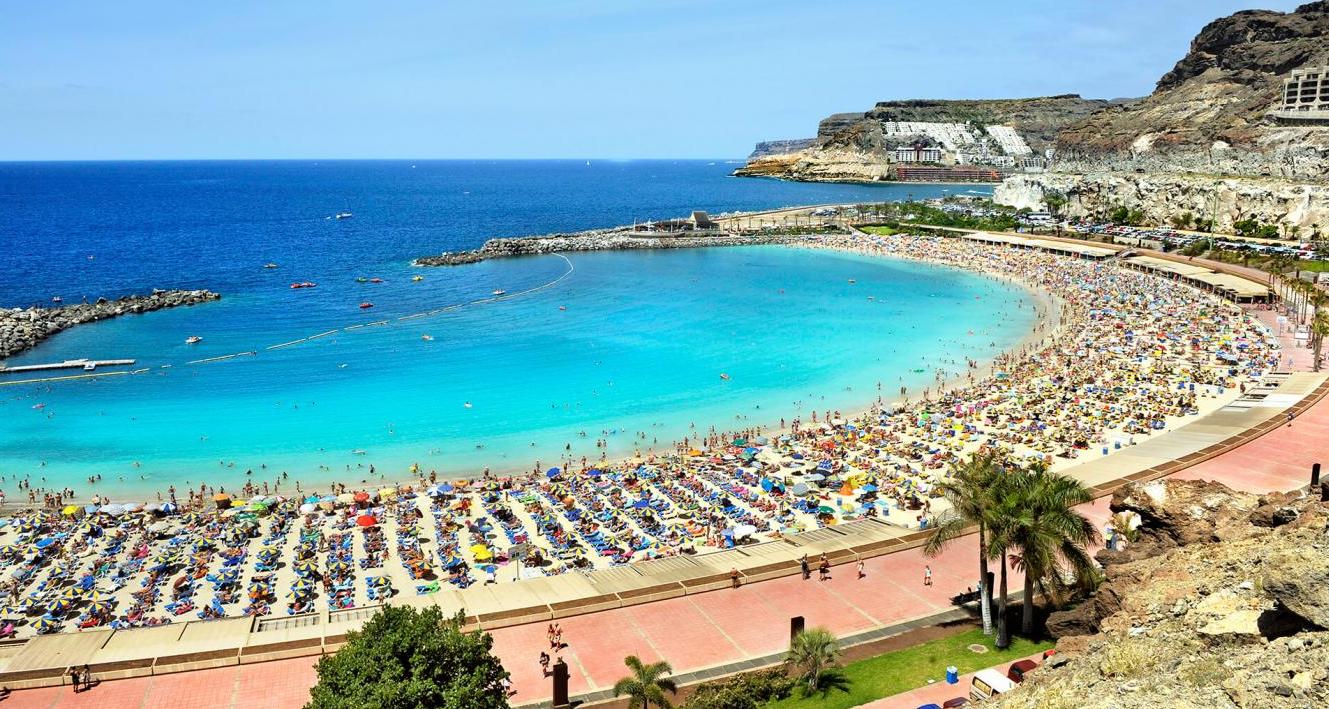
Playa de Amadores is a man-made beach that has quickly become one of Gran Canaria's most popular destinations. The beach is known for its crystal-clear waters and white sand, which was imported from the Caribbean to create a perfect beach experience. The calm, shallow waters make it ideal for swimming, snorkeling, and other water sports. The beach is also lined with restaurants and bars, offering everything from casual snacks to gourmet meals. Playa de Amadores is particularly famous for its sunsets, which can be enjoyed from the comfort of a beachfront bar with a cocktail in hand. The beach is meticulously maintained, ensuring that it remains a pristine spot for both relaxation and adventure.
Location: Amadores, Gran Canaria, Spain
Opening Hours: Open 24 hours
Ticket Cost: Free, but water sports may have separate charges
Review: "The beach is perfect for families. The water is calm, and the views are beautiful." - Charles KH, TripAdvisor
8. Visit the Botanical Garden Viera y Clavijo
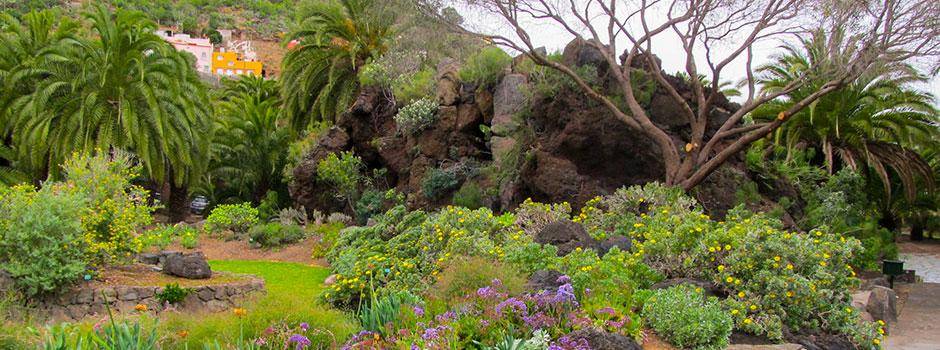
The Botanical Garden Viera y Clavijo, also known as Jardín Canario, is the largest botanical garden in Spain, spanning 27 hectares of lush, green space. Located in Tafira, just outside Las Palmas, the garden is a living museum of the Canary Islands' unique flora, including rare and endangered species. The garden is divided into several sections, each dedicated to different plant types, from towering palms to delicate orchids. There is also a section that replicates the island's various ecosystems, from coastal dunes to laurel forests. The garden was founded in 1952 by the Swedish botanist Eric Sventenius, who dedicated his life to the study and preservation of Canarian plant life. Today, it serves as both a research centre and a peaceful retreat for nature lovers.
Location: Tafira, Las Palmas, Gran Canaria, Spain
Opening Hours: 9:00 AM - 6:00 PM
Ticket Cost: Free
Review: "A beautiful place to relax and learn about the island’s unique plants." - Marta P., Capture the Atlas
Website: http://www.jardincanario.org/
9. Explore the Village of Tejeda
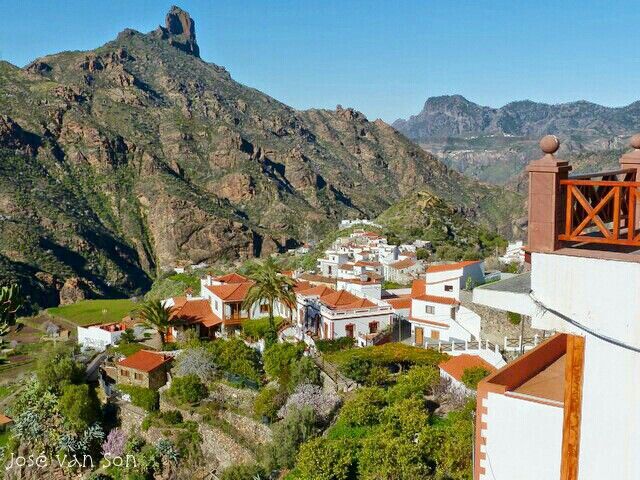
Tejeda is often regarded as one of the most beautiful villages in Spain, and it's easy to see why. Nestled in the mountains of central Gran Canaria, the village offers stunning views of the surrounding peaks, including the famous Roque Nublo and Roque Bentayga. Tejeda is also famous for its almond trees, which bloom in a spectacular display of white and pink flowers every winter. The village is known for its artisanal almond sweets, which are a must-try for any visitor. These delicacies are often sold in the small, family-run shops that line the village's narrow streets. Beyond its natural beauty, Tejeda is steeped in history, with roots that date back to the pre-Hispanic era. The village's strategic location made it an important site for the indigenous Canarian people, and later for the Spanish settlers. Today, Tejeda is a haven for hikers and those seeking a tranquil escape from the busier coastal areas of the island.
Location: Tejeda, Gran Canaria, Spain
Opening Hours: Village open 24 hours; attractions vary
Ticket Cost: Free
Review: "Tejeda is the perfect place to experience the rural charm of Gran Canaria." - Simon R., Hand Luggage Only
10. Visit the Museum and Archaeological Reserve of Cueva Pintada
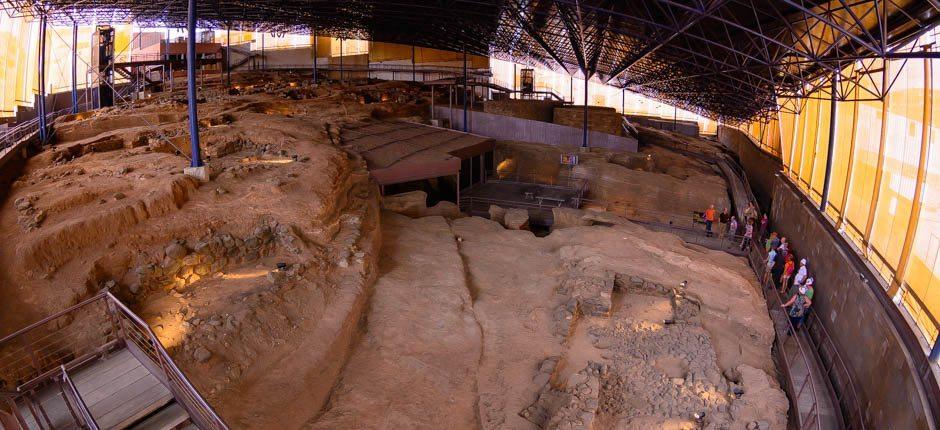
The Museum and Archaeological Reserve of Cueva Pintada in Gáldar is one of the most significant archaeological sites in the Canary Islands. This remarkable museum is centred around a cave with ancient rock paintings created by the indigenous Guanches, the original inhabitants of the island. The paintings, which depict geometric patterns and other symbols, provide a rare glimpse into the spiritual and everyday lives of the island's early settlers. The museum itself is built around the cave, offering visitors a unique opportunity to see the art in its original context. Exhibits include artifacts excavated from the site, as well as reconstructions that help bring the history of the Guanches to life. The Cueva Pintada was discovered in the 19th century and has been carefully preserved to ensure that this vital part of Gran Canaria's heritage remains accessible to future generations.
Location: Gáldar, Gran Canaria, Spain
Opening Hours: 10:00 AM - 6:00 PM
Ticket Cost: €6 for adults, €3 for children
Review: "A must-see for anyone interested in history and archaeology. The cave paintings are incredibly well-preserved, and the museum does an excellent job of contextualizing the site." - Sarah J., Capture the Atlas
Website: www.cuevapintada.com
11. Discover the Barranco de Guayadeque
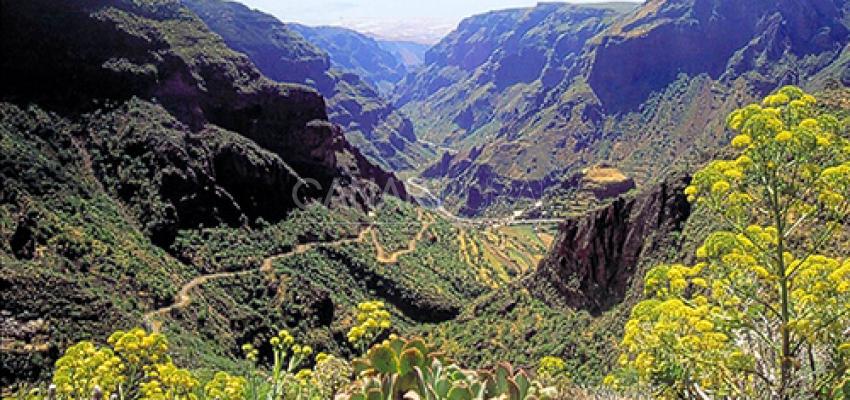
Barranco de Guayadeque is a breathtaking ravine located between the towns of Agüimes and Ingenio, famous for its stunning natural beauty and historical significance. The ravine is home to a number of cave dwellings, some of which are still inhabited today. These caves, carved into the rock face, have been used as homes, storerooms, and even churches for centuries. The area is also rich in archaeological sites, with evidence of settlement dating back to the island's pre-Hispanic era. Visitors can explore the ravine's small museum, which provides insights into the life of the indigenous Canarian people who once called this area home. The landscape of Barranco de Guayadeque is lush and green, in stark contrast to the arid terrain found elsewhere on the island, making it a popular destination for hikers and nature lovers. The ravine is also home to several traditional Canarian restaurants, where visitors can enjoy local dishes in a unique, cave-like setting.
Location: Between Agüimes and Ingenio, Gran Canaria, Spain
Opening Hours: Open 24 hours
Ticket Cost: Free, but donations to the visitor centre are appreciated
Review: "An extraordinary place that combines natural beauty with a deep sense of history. The cave houses are fascinating." - Juan P., Hand Luggage Only
12. Relax at Puerto de Mogán
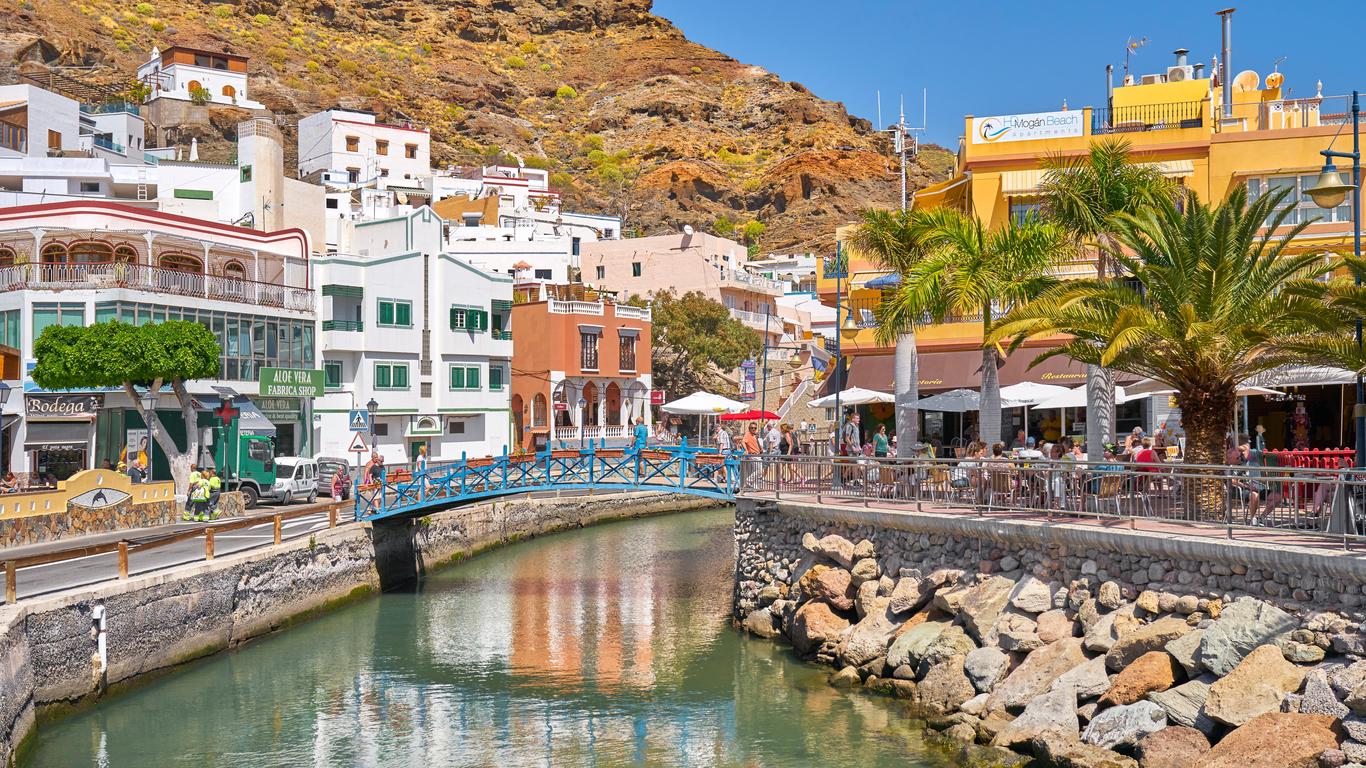
Puerto de Mogán, often referred to as "Little Venice," is a picturesque fishing village on the southwest coast of Gran Canaria. The village is characterized by its charming network of canals and bridges, which give it a distinctly Venetian feel. The marina is the heart of Puerto de Mogán, lined with whitewashed houses adorned with colourful bougainvillea. The village is a popular spot for yachting, and the marina is filled with boats from all over the world. Puerto de Mogán is also known for its vibrant Friday market, where you can find everything from local crafts to fresh produce. The village's location on the coast makes it an ideal spot for water activities, including boat tours, snorkeling, and scuba diving. Despite its popularity, Puerto de Mogán has retained much of its traditional charm, making it a favourite destination for those seeking a more relaxed and authentic experience in Gran Canaria.
Location: Mogán, Gran Canaria, Spain
Opening Hours: Open 24 hours; market day on Fridays
Ticket Cost: Free
Review: "A beautiful and peaceful spot to unwind. The marina area is especially lovely at sunset." - Emma K., TripAdvisor
13. Visit the Painted Cave of Agaete (Cueva Pintada de Agaete)

The Painted Cave of Agaete, known as Cueva Pintada de Agaete, is a fascinating archaeological site located on the northwest coast of Gran Canaria. This cave is famous for its ancient rock art, which is believed to have been created by the indigenous Guanche people. The paintings inside the cave depict a variety of geometric shapes and symbols, which are thought to have had religious or ceremonial significance. The site also includes a small museum that provides context for the cave art, offering insights into the culture and beliefs of the island's early inhabitants. The Cueva Pintada de Agaete is less well-known than its counterpart in Gáldar, but it is no less impressive. The cave's location in the lush Agaete Valley, surrounded by dramatic cliffs and verdant greenery, makes it a peaceful and reflective place to visit.
Location: Agaete, Gran Canaria, Spain
Opening Hours: 10:00 AM - 6:00 PM
Ticket Cost: €5
Review: "The paintings here are less well-known than those in Gáldar, but they're equally fascinating and provide a deeper understanding of the island's ancient cultures." - Marco L., Capture the Atlas
14. Explore the Bandama Caldera
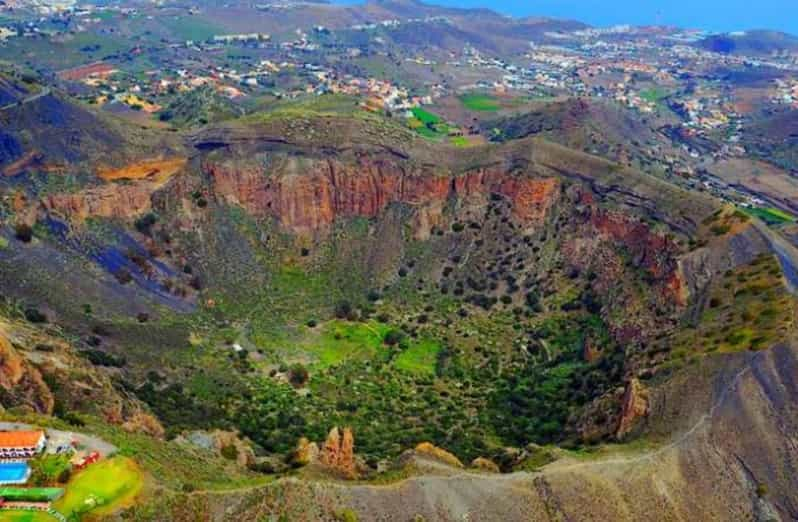
The Bandama Caldera is one of Gran Canaria's most striking natural features, a massive volcanic crater that offers visitors a unique opportunity to explore the island's geological past. The caldera was formed around 5,000 years ago during a powerful volcanic eruption, and it remains an important site for geologists studying the volcanic activity in the Canary Islands. The crater is approximately one kilometer in diameter and 200 meters deep, and visitors can hike around the rim for spectacular views of the surrounding landscape, including the nearby city of Las Palmas. For those who prefer a more challenging adventure, it's possible to hike down into the caldera itself, where you'll find a lush environment filled with native plants and wildlife. The Bandama Caldera is also home to a small winery, where you can sample wines made from grapes grown on the fertile volcanic soil.
Location: Santa Brígida, Gran Canaria, Spain
Opening Hours: Open 24 hours
Ticket Cost: Free
Review: "An incredible place for a hike. The views from the top are breathtaking, and it's fascinating to see the inside of a volcanic crater." - Alice T., Hand Luggage Onl
15. Experience the Fiesta de la Rama in Agaete
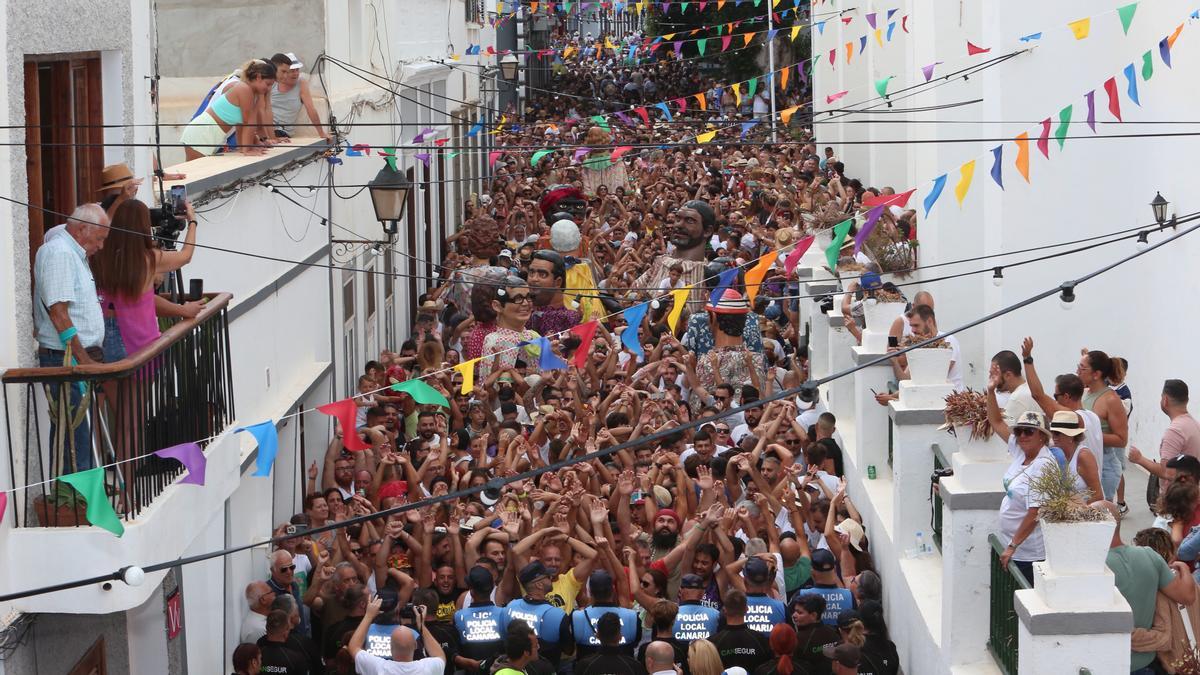
The Fiesta de la Rama is one of Gran Canaria's most vibrant and deeply rooted cultural celebrations, taking place every August in the town of Agaete. The festival dates back to pre-Hispanic times and is believed to have originated as a ritual to invoke rain by offering branches to the gods. Today, the Fiesta de la Rama is a lively event that draws visitors from all over the island and beyond. Participants carry large branches, or "ramas," from the mountains down to the town, accompanied by traditional music and dancing. The streets of Agaete come alive with colour and energy as locals and visitors alike join in the celebrations, which culminate in a grand procession to the sea, where the branches are offered to the waves. The festival is a unique opportunity to experience the rich cultural heritage of Gran Canaria and to witness a tradition that has been passed down through generations.
Location: Agaete, Gran Canaria, Spain
Date: August 4th each year
Ticket Cost: Free
Review: "A truly unique cultural experience. The energy and passion of the participants make this festival unforgettable." - Roberto M., TripAdvisor
Website: https://www.grancanaria.com/turismo//fiestas
Gran Canaria is a destination that truly offers something for everyone. From its stunning natural landscapes like the Maspalomas Dunes and Roque Nublo to its rich cultural heritage showcased in places like Vegueta and Cueva Pintada, the island is a treasure trove of experiences waiting to be explored. Whether you're drawn to its beautiful beaches, historic villages, or vibrant festivals, Gran Canaria promises an unforgettable journey filled with discovery, adventure, and relaxation. This guide aims to provide you with a comprehensive and detailed roadmap to make the most of your visit to this incredible island.
Have You Got your accommodation in Gran Canaria yet? We can help!
We've got great properties for you, so all you'll have to do is plan your days and create great memories with your family.
Save time while you're on the trip and organise your tickets to attractions and excursions NOW so you don't have to while you're there. Quick and easy!
Happy travels!
Destination Travel Series
- South Africa, Dolphin Coast
- Spain, Marbella
- Dubai, United Arab Emirates (UAE)
- Scotland, Edinburgh
- United Kingdom, London
- Portugal, Lisbon
- France, Nice
- Italy, Piedmont
- Italy, Lecce
- Australia, NSW
- Mexico, Cozumel
- United Kingdom, Devon
- France, Haute-Savoie
- South Africa, Cape Town
- Spain, Costa Blanca
- Morocco, Marrakesh
- USA, Disneyworld, Florida
- Spain, Gran Canaria
- Israel
- South Africa
- Spain, Barcelona
- France, Paris
- Spain, Madrid
- Australia, Sydney
- Italy, Lake Como
- Spain, Nerja
- Thailand
- Spain




